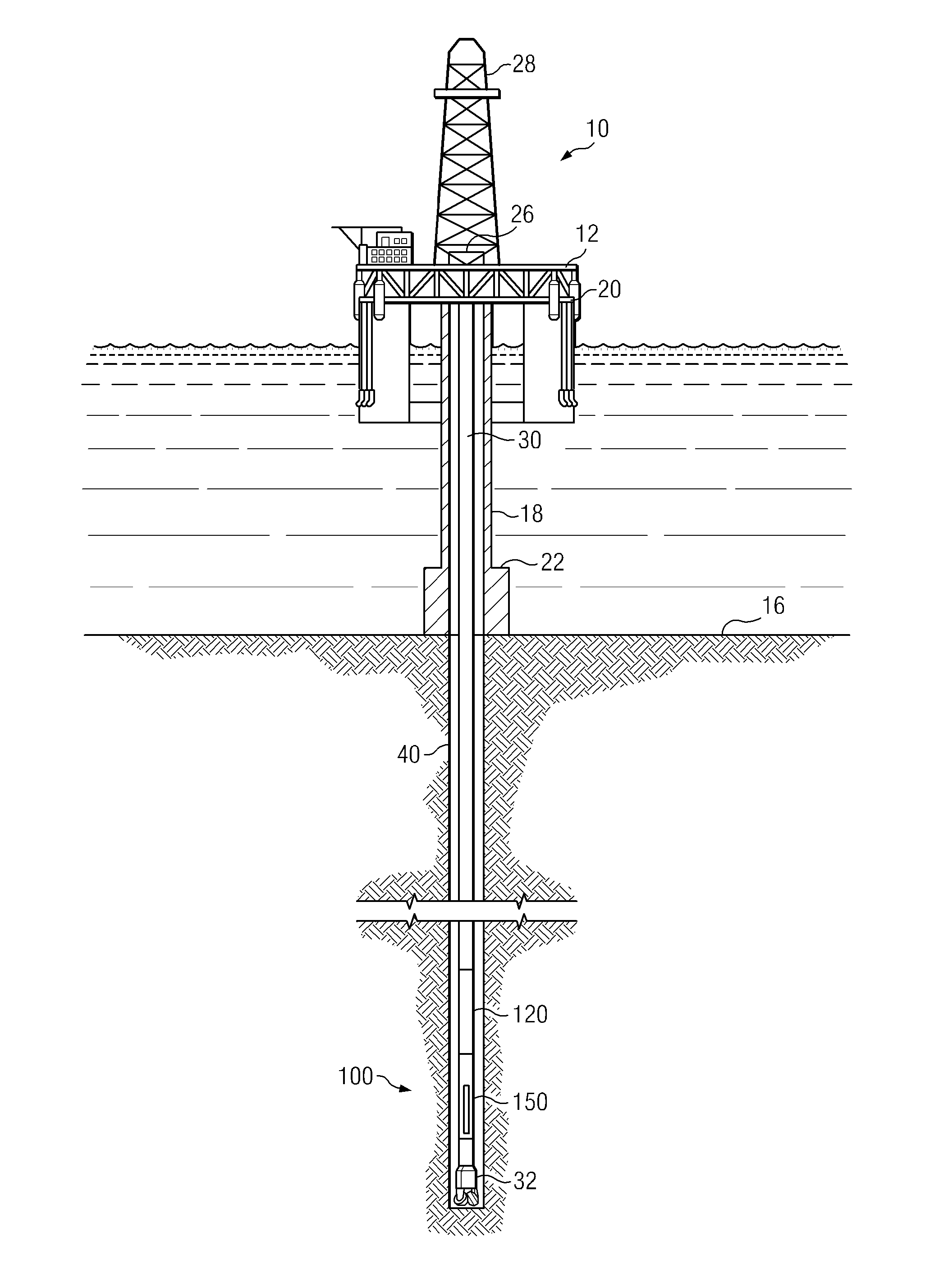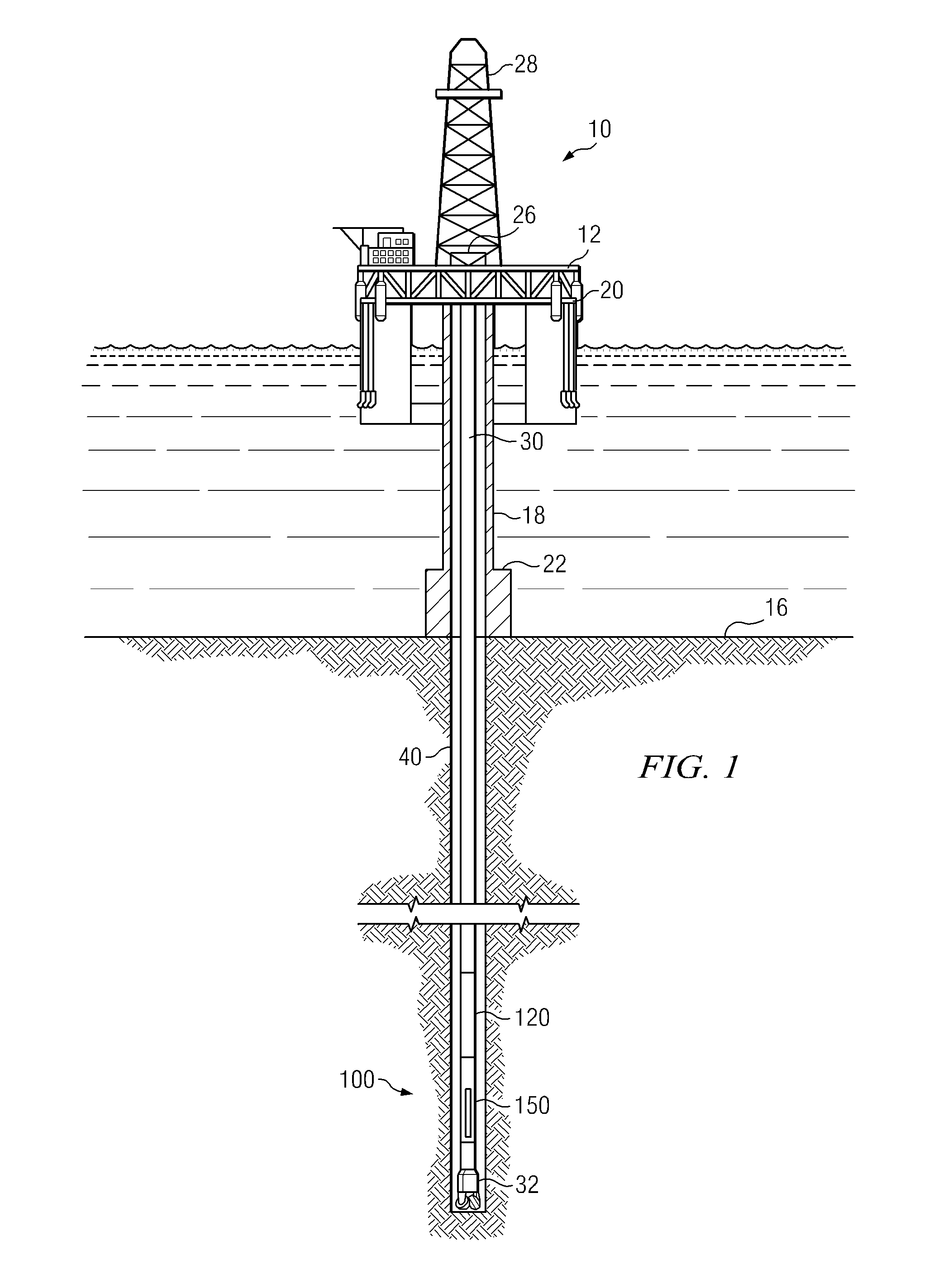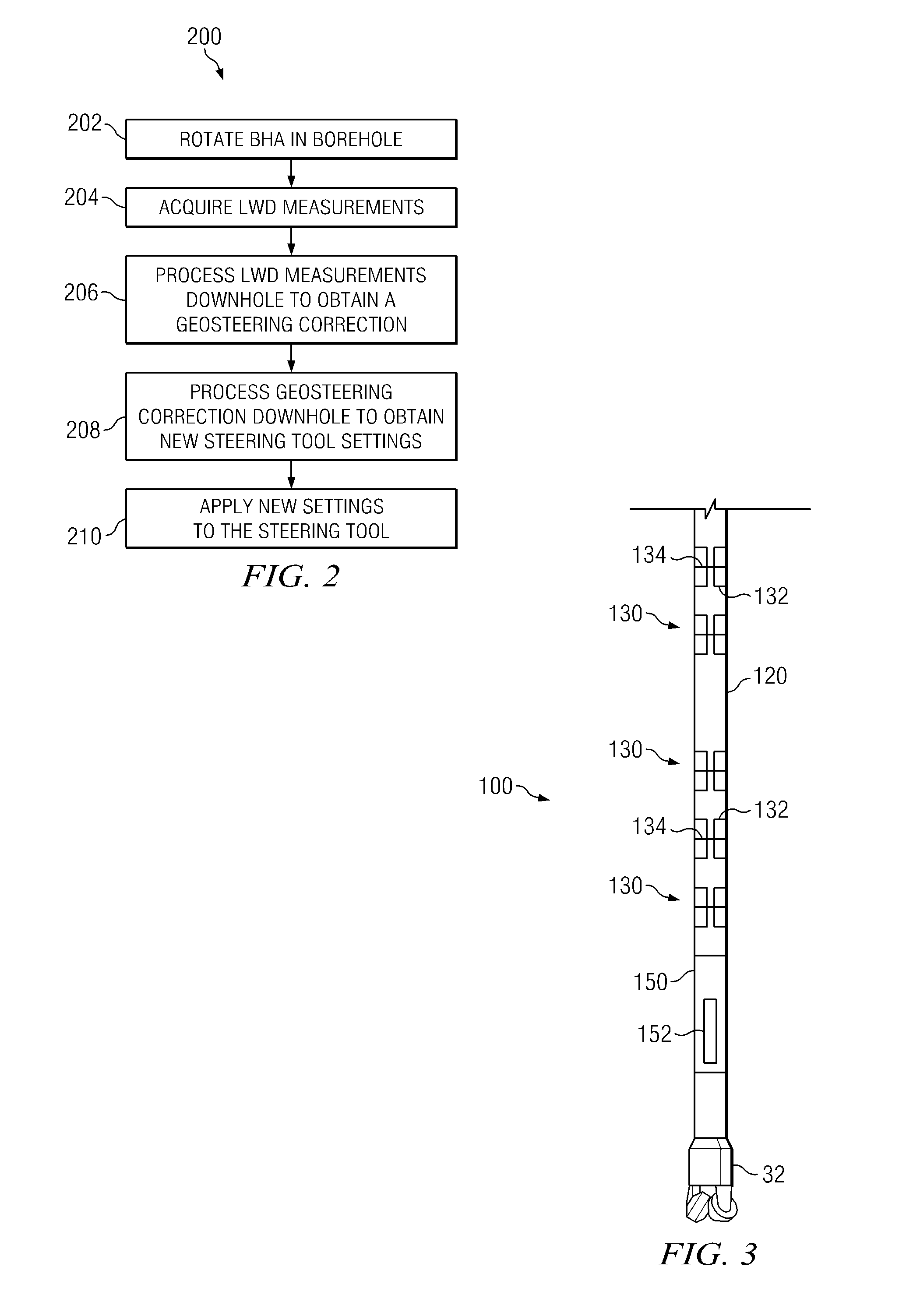Downhole closed-loop geosteering methodology
a geosteering and closed-loop technology, applied in the direction of surveying, directional drilling, borehole/well accessories, etc., can solve the problems of increasing the difficulty of drilling, so as to improve the timeliness and accuracy of geosteering operations, reduce the tortuosity of the borehole, and improve the accuracy of drilling operations
- Summary
- Abstract
- Description
- Claims
- Application Information
AI Technical Summary
Benefits of technology
Problems solved by technology
Method used
Image
Examples
embodiment 200
[0022]FIG. 2 depicts a flow chart of one exemplary method embodiment 200 in accordance with the present invention. As depicted, method 200 is a closed-loop method for geosteering. By closed-loop it is meant that the geosteering calculations and subsequent adjustments to the steering direction are made automatically downhole without the need for any uphole (surface) processing or decision making. Such autonomous downhole decision making is based on feedback obtained from various LWD measurements. A portion of the LWD data may optionally be transmitted uphole for surface monitoring of the closed loop geosteering process. At 202 of method 200 a subterranean borehole (or a section thereof) is drilled using convention directional drilling techniques (e.g., by rotating BHA 100 in the borehole). Logging while drilling measurements (preferably directional resistivity measurements) are acquired at 204. These LWD measurements are processed downhole while drilling to obtain a geosteering corre...
embodiment 250
[0026]FIG. 4 depicts a flow chart of another exemplary method embodiment 250 in accordance with the present invention. In the exemplary embodiment depicted first and second geometric 260 and geosteering 270 algorithms are utilized in parallel to achieve an optimum well placement. The geometric algorithm 260 is based upon a predetermined geometric well plan 262 derived, for example, from a field development plan. As is known to those of ordinary skill in the art, a typical field development plan is commonly designed to achieve maximum drainage and is often based upon structural knowledge of the field obtained from seismic profiles, offset wells, and previous wells drilled in the area. Conventional surveys are acquired at 264. These surveys typically include borehole azimuth and borehole inclination measurements and are commonly obtained at about 30 foot intervals in measured depth (e.g., when a new section of drill pipe is added to the drill string). A geometric well position is comp...
PUM
 Login to View More
Login to View More Abstract
Description
Claims
Application Information
 Login to View More
Login to View More - R&D
- Intellectual Property
- Life Sciences
- Materials
- Tech Scout
- Unparalleled Data Quality
- Higher Quality Content
- 60% Fewer Hallucinations
Browse by: Latest US Patents, China's latest patents, Technical Efficacy Thesaurus, Application Domain, Technology Topic, Popular Technical Reports.
© 2025 PatSnap. All rights reserved.Legal|Privacy policy|Modern Slavery Act Transparency Statement|Sitemap|About US| Contact US: help@patsnap.com



